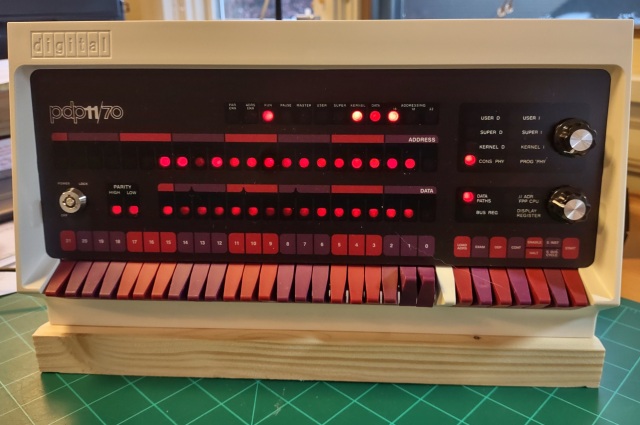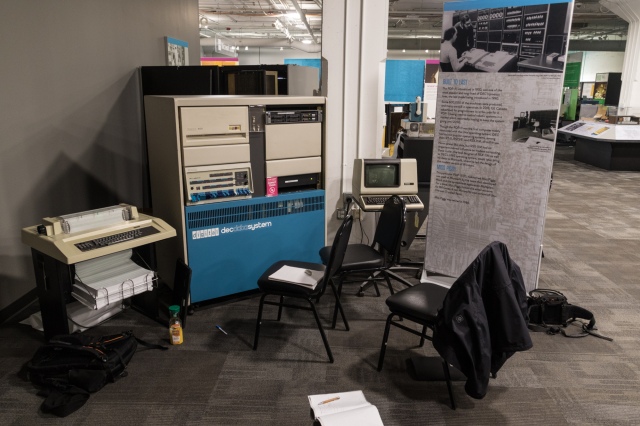For several years, I have eyed Oscar Vermeulen’s PDP-11 replica available at Obsolescence Guaranteed. I finally pulled the trigger this fall and purchased the kit. The kit is well designed and documented:
I really took my time building this. Oscar says it takes 6 hours. I would do a little and then walk away for the rest of the day so it took me close to 2 weeks to build.
My only error was one of the many, many LEDs. Once they were soldered in, you can do a test of all LEDs. D11 was dead. After discussing this with Oscar, chances are it was the LED and nothing else so it would need to be removed.
I’m more than adequate at soldering, but desoldering is a whole other story. I was loath to remove that LED. Happily, I managed to get it out without damaging the pads. I then stuck the ‘bad’ LED on a breadboard and tested it. It worked. My heart sank – I’m sure every LED had been placed in the proper polarity.
I loose fit a replacement LED into position and it worked! Soldered and tested again and the problem was solved. I must have put that LED in backwards, though I’m sure I examined every component before soldering.
Getting the switches properly aligned was another slow task. It was not easy to get them perfectly aligned. After 2 tries, I decided that was as good as it was going to get. Honestly, I’m probably the only person that will realize the slight differences in protrusion.
Before ever starting the build, I had setup a Raspberry Pi 3 and had all of the software in place and had a good idea how the software side worked. So once the hardware build was done, I was up and running.
In my blog post Setting up a PDP-8 Emulator for Windows, I mention that I used a PDP-8 to learn assembler, but I have since learned that was wrong. I used a PDP-11. I verified this by tracking down the course book I used, but perhaps more on that later on.
I am just starting to mess around with the software side. I got the BSD Unix up and running before I received the hardware. That O/S is close enough to modern Linux I can navigate is w/o much trouble, but I really want to go back to the RT-11 O/S which is what would have been in use back in 1980.
I have found my old course book on ebay and ordered. I also ordered an serial terminal with VT emulation which I hope to connect. I’m also thinking this would be a cool use for an old epson dot matrix printer I’ve been loath to get rid of.
I expect I will post more about the PDP-11 as I start to learn its ins and outs.
A ‘real’ PDP-11 courtesy The Living Computer Museum:






Why to have pdp-11? Wow I used to play with it when I was in HS 1978 I know it is DEC but not know which model. It looks like same one what you have.
If you had a PDP-11 at your high school, it was probably a low-end model like an 11/23 which cost $20,000 (about 2Y of salary for a secretary in the 1970s). The Oscar Vermeulen kit is for the 11/70, the highest powered PDP-11 of the 1970’s with up to 256KB of RAM and many disk drives and could easily support 10 users at 0.7 VAX MIPs, I think it cost $100,000+. The PDP-11/45 (no cache) and 11/70 (with cache) became the minicomputers of choice to run UNIX when it was first licensed in 1975.
My small town high school inherited a PDP11/34 RSTS from a friendly manufacturing co in the mid 70’s. I built my first hack on it – a back door into the 0,1 admin account. Fond memories.
I was part of a team in the Roya Navy creating ship design CAD 1979-1982 in Bath, Avon, UK. PDP 11/70 and RSX/11.
Pingback: Valuable News – 2022/11/28 | 𝚟𝚎𝚛𝚖𝚊𝚍𝚎𝚗